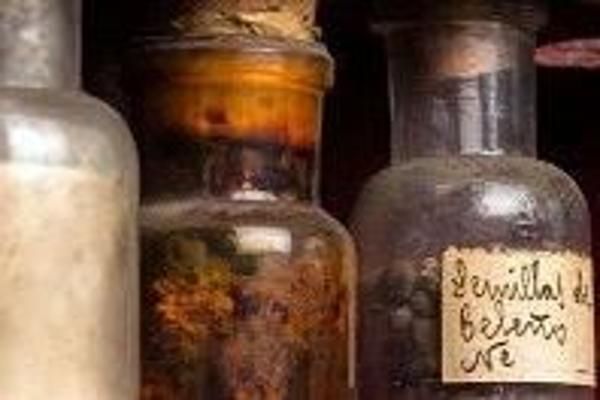Farmacología, Farmacognosia y Botánica
Departamento

Emilio
Ambrosio Flores
Publicaciones en las que colabora con Emilio Ambrosio Flores (56)
2024
-
Lack of interactions between prenatal immune activation and Δ9-tetrahydrocannabinol exposure during adolescence in behaviours relevant to symptom dimensions of schizophrenia in rats
Progress in neuro-psychopharmacology & biological psychiatry, Vol. 129, pp. 110889
2023
-
Interaction between maternal immune activation and peripubertal stress in rats: impact on cocaine addiction-like behaviour, morphofunctional brain parameters and striatal transcriptome
Translational Psychiatry, Vol. 13, Núm. 1
-
The long-term effects of adolescent Δ9-tetrahydrocannabinol on brain structure and function assessed through neuroimaging techniques in male and female rats
European Neuropsychopharmacology, Vol. 74, pp. 47-63
2022
-
Effects of heroin self-administration and forced withdrawal on the expression of genes related to the mTOR network in the basolateral complex of the amygdala of male Lewis rats
Psychopharmacology, Vol. 239, Núm. 8, pp. 2559-2571
-
Ex vivo 1H-MRS brain metabolic profiling in a two-hit model of neurodevelopmental disorders: Prenatal immune activation and peripubertal stress
Schizophrenia Research, Vol. 243, pp. 232-240
-
The interactions of alcohol and cocaine regulate the expression of genes involved in the GABAergic, glutamatergic and endocannabinoid systems of male and female rats
Neuropharmacology, Vol. 206
2021
-
Cocaine-induced Fos expression in the rat brain: Modulation by prior Δ9-tetrahydrocannabinol exposure during adolescence and sex-specific effects
Brain Research, Vol. 1764
-
Δ 9-Tetrahydrocannabinol during adolescence reprograms the nucleus accumbens transcriptome, affecting reward processing, impulsivity, and specific aspects of cocaine addiction-like behavior in a sex-dependent manner
International Journal of Neuropsychopharmacology, Vol. 24, Núm. 11, pp. 920-933
2020
-
Central nucleus of the amygdala as a common substrate of the incubation of drug and natural reinforcer seeking
Addiction Biology, Vol. 25, Núm. 2
-
Comparative analysis of the modulation of perineuronal nets in the prefrontal cortex of rats during protracted withdrawal from cocaine, heroin and sucrose self-administration
Neuropharmacology, Vol. 180
-
Maternal immune activation is associated with a lower number of dopamine receptor 3-expressing granulocytes with no alterations in cocaine reward, resistance to extinction or cue-induced reinstatement
Pharmacology Biochemistry and Behavior, Vol. 193
-
The effects of combined intravenous cocaine and ethanol self-administration on the behavioral and amino acid profile of young adult rats
PLoS ONE, Vol. 15, Núm. 3
-
The role of the mTOR pathway in models of drug-induced reward and the behavioural constituents of addiction
Journal of Psychopharmacology, Vol. 34, Núm. 11, pp. 1176-1199
2019
-
Cuaderno de actividades prácticas presenciales de fundamentos de Psicobiología: guía del profesor-tutor
UNED - Universidad Nacional de Educación a Distancia
-
Impulsive action and impulsive choice are differentially associated with gene expression variations of the GABAA receptor alfa 1 subunit and the CB1 receptor in the lateral and medial orbitofrontal cortices
Frontiers in Behavioral Neuroscience, Vol. 13
-
Morphine self-administration alters the expression of translational machinery genes in the amygdala of male Lewis rats
Journal of Psychopharmacology, Vol. 33, Núm. 7, pp. 882-893
2018
-
Mu-opioid receptors in ganglia, but not in muscle, mediate peripheral analgesia in rat muscle pain
Anesthesia and Analgesia, Vol. 126, Núm. 4, pp. 1369-1376
-
Selective effects of Δ9-tetrahydrocannabinol on medium spiny neurons in the striatum
PLoS ONE, Vol. 13, Núm. 7
2017
-
Extended-access methamphetamine self-administration elicits neuroinflammatory response along with blood-brain barrier breakdown
Brain, Behavior, and Immunity, Vol. 62, pp. 306-317
-
Parafascicular thalamic nucleus deep brain stimulation decreases NMDA receptor GluN1 subunit gene expression in the prefrontal cortex
Neuroscience, Vol. 348, pp. 73-82
